This post first appeared on Second Wave Michigan through a partnership with the W.K. Kellogg Foundation.
"I think Pre K For All is providing more equal opportunities for children in all areas and all kinds of economic status."
Amanda Walsh, parent and foster parent

In January 2023, Governor Gretchen Whitmer announced her PreK for All plan, which would provide access to free prekindergarten education to all four-year-olds in Michigan by 2027. In February 2024, the Michigan Department of Lifelong Education, Advancement, and Potential (MiLEAP) released the Roadmap plan with recommendations on how the state could achieve the goal. Policy Equity Group, a Washington D.C. educational consultant organization that focuses on early care and education policies, co-authored the roadmap.
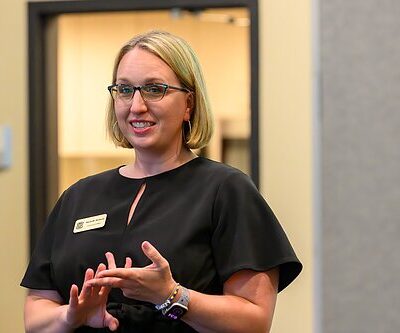
“I am excited to get started with the talented team at MiLEAP to continue delivering for kids and families across Michigan,” said acting director Michelle Richard in a Dec. 1, 2023 press release. “Under Governor Whitmer’s leadership, we’ve made child care easier to find, expanded access to free pre-K, lowered the cost of college, and helped thousands of Michiganders earn a skill certificate or college degree. But we know there’s so much more to do. As a Michigander and a mom, I am excited to work with partners inside and outside of state government to build on this momentum and make Michigan the best place to raise a family.”
After several months of gathering input from community, collecting data, and reviewing Michigan’s current preschool programs, the recently released Roadmap proposes how Michigan could achieve its PreK For All goal of 75% enrollment of all four-year-olds — about 88,500 children — while maintaining high-quality programs, recruiting and retaining a pre-K workforce, and connecting the PreK For All program to the overall early learning and childcare system.
“We took what we heard from the communities very seriously,” says Frances Einterz, senior director of policy for the Policy Equity Group. “As I was writing portions of the plan, my top priority was to make sure that when communities read the plan, they would hear themselves in it and say ‘Oh, that’s absolutely the concern I was trying to get across.’ Even if it wasn’t solved perfectly, they felt validated and heard.”
To get as much input as they could from parents, caretakers, intermediate school districts, and early learning and child care providers, Policy Equity Group, along with Georgia-based Southern Imaginations, co-hosted a number of in-person and virtual listening sessions across the state.
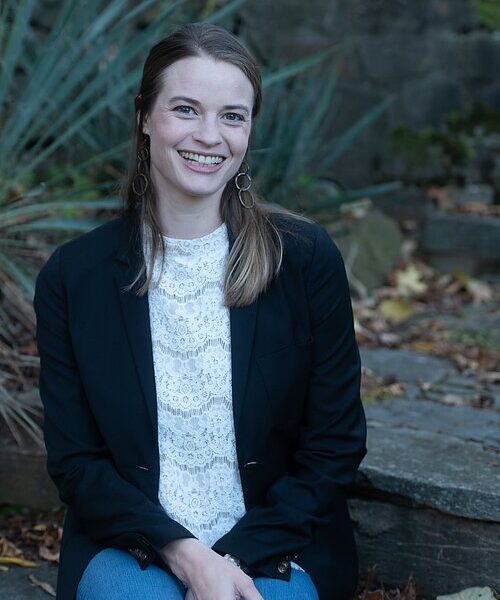

Shelby Holman, Southern Imaginations’ CEO and managing member, notes that the listening sessions provided an open environment where people felt safe to freely discuss what they were seeing and experiencing with childcare. This opened the door for listening session leaders to hear from different communities with varying demographics, from rural to urban, and different cultures. To ensure everyone impacted could weigh in, an online feedback form was offered in addition to the listening sessions. The form was kept live for longer than planned to ensure that even more responses from a broad, diverse group representing the state could be heard.
Holman believes the process provided a holistic view of Michigan residents who focused on key topics of quality, choice, accessibility, facilities, and transportation.
“Providers and community members did not want quality to be reduced,” Holman says. “Whatever the expansion ultimately looks like, they did not want quality to be reduced, but they did want choice, and that’s a very thin line when you start to talk about maintaining consistency, but giving someone that choice to say you can go wherever it is that you want to go to be able to get this quality.”
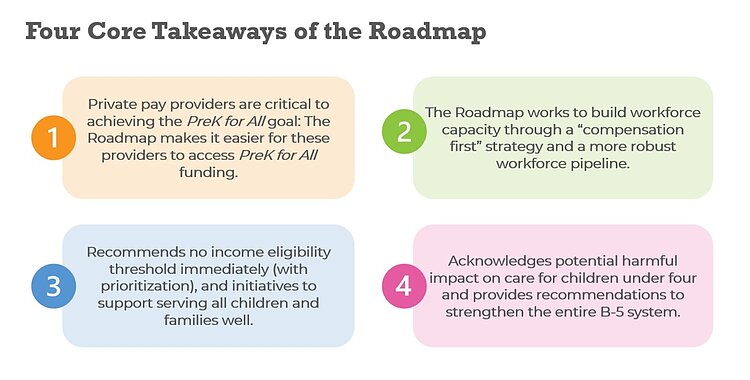
“As a parent, pre-K is expensive. On average it's about $1,000 or more per month. That is $12,000 a year.”
Chad Waldron, parent
To achieve universal preschool for all of the state’s four-year-olds, more spots have to become available. According to the National Institute for Early Education Research (NIEER), the states with the highest pre-K enrollment have a rate of just under 70% enrollment. Michigan has a goal of enrolling 75% of its 118,000 four-year-olds by 2027, a move that would make the state the top-enrolling for preschools in the country, according to the Roadmap.
The Roadmap also shares that about 49,000 Michigan children are currently enrolled in publicly funded early-learning settings, with those programs able to add about 6,800 additional children — a total of 55,800 children. To reach the 75% enrollment, the state would need to enroll about 32,000 more children and add 1,700 classrooms. The additional classrooms would require about 1,700 lead teachers and 3,400 associate teachers.
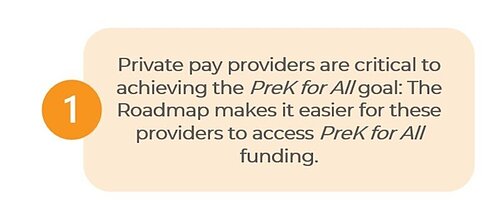
To help providers who would like to be part of PreK for All but may need financial assistance to meet the requirements, the plan recommends startup grants that could be used for recruiting bonuses, curriculum materials and other classroom supplies, training, and other expenses associated with a start-up. It also recommends that intermediate school districts (ISDs) should identify a start-up coordinator who could provide outreach and technical assistance.
To achieve that goal, the Roadmap recommends ensuring funding could be accessed by more community-based providers and creating a home-based early learning provider pilot that would allow existing home-based providers a new pathway to participate in the PreK For All program.
“The home-base pilot was a recommendation that absolutely came about as a product of multiple things,” Einterz says. “But number one, we kept hearing from home-based providers in the input sessions saying, ‘We want to be a part of this. Please let us in.’”
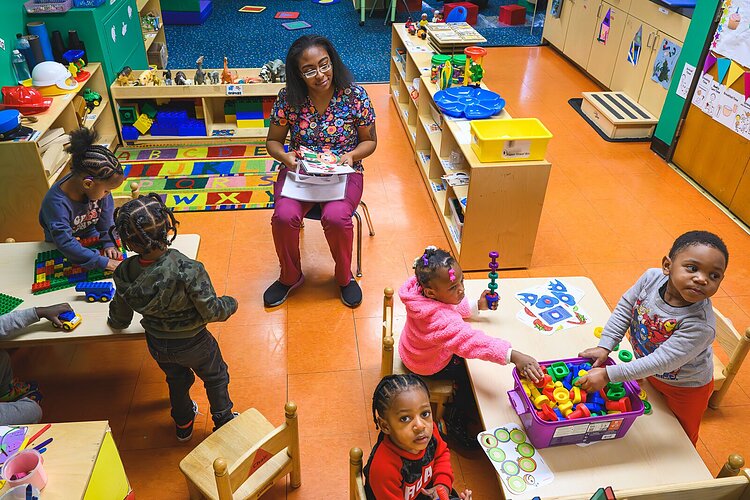
Reviewing NIEER’s research on pre-K programs, Einterz says they were able to learn about existing programs (there are not many) that utilize community-based or home-based providers as part of a public pre-K program.
“It’s a really exciting opportunity for Michigan,” Einterz says. “If they were able to implement an effective home-based pre-K pilot, it would make Michigan a national leader that could say ‘This is how you do this well.’”
To help increase spots, the Roadmap also suggests the student to teacher ratio be increased from 8-to-1 to 10-to-1. Increasing the ratio would not only provide about an additional 10,000 spaces but would also provide additional revenue for increasing teacher compensation. Holman points out that under the GSRP, classrooms cannot exceed 18 students. Since the goal is to follow those guidelines, the result would be having to bring in an additional assistant/lead teacher to reduce the student/teacher ratio.
Jeffrey Capizzano, president and founder of the Policy Equity Group, emphasizes the ratio is optional because, throughout the listening sessions, they heard from various community members about groups of children who were struggling after COVID and may need additional resources. By making it optional, it allows the program facilitators to decide what the ratio should be to meet the needs of their students.

“The babies that we’re raising up are going to be the next ones to be teaching long after we're no longer here. It is very important that we're doing this work and we're showing love.”
Makese Taylor, Detroit Champions for Hope
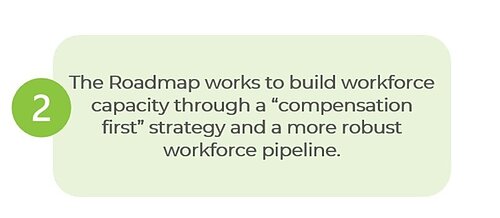 More classrooms will create a need to increase the workforce. Pay for early learning and childcare has historically been low. According to the Center of Study for Child Care Employment, Michigan’s early educators with a bachelor’s degree are paid about 21% less than their K-8 colleagues. The Roadmap notes that public school GSRP teachers make about 17,500 less than K-12 and GSRP teachers in non-public school settings make about $25,000 less.
More classrooms will create a need to increase the workforce. Pay for early learning and childcare has historically been low. According to the Center of Study for Child Care Employment, Michigan’s early educators with a bachelor’s degree are paid about 21% less than their K-8 colleagues. The Roadmap notes that public school GSRP teachers make about 17,500 less than K-12 and GSRP teachers in non-public school settings make about $25,000 less.
By building upon the state’s current efforts to recruit and train future educators through Grow Your Own programs and the MI Future Educator Fellowship, the plan proposes the state should continue to build a diverse PreK For All workforce through targeted recruitment efforts and scholarships. The Roadmap encourages working with higher education programs to create multiple, alternative pathways to achieving credentials while working to reduce and/or eliminate the cost of earning those credentials.
To build workforce capacity, the Roadmap also recommends a compensation-first strategy for parity, with lead teachers being paid the same salary as K-12 lead teachers in the respective school district along with a state-backed benefits package. To achieve this, a separate pay equity fund or a larger per-child allocation for pre-K will be needed. In her 2024 budget, Whitmer has proposed increasing the per-child allocation for pre-K to $10,342.
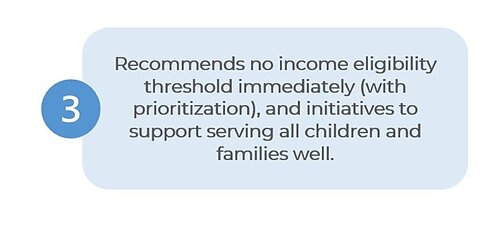 The PreK for All program would be open to all residents regardless of income with prioritization given to less advantaged families, ensuring families are referred to the program that best fits their child’s needs, such as Head Start.
The PreK for All program would be open to all residents regardless of income with prioritization given to less advantaged families, ensuring families are referred to the program that best fits their child’s needs, such as Head Start.
“If you open it up to all families, the ISDs still have a way in which to prioritize the highest need first,” Capizzano says. “Eliminating the requirements makes for simple, clear messaging to parents that everyone is eligible.”
Programs also would have to be inclusive, serving the needs of all types of students, providing options for students who speak another language, meeting special needs, and offering transportation. The Roadmap also supports five-day-a-week programming and wrap-around care for parents that would include before- and after-school care and summer programming.
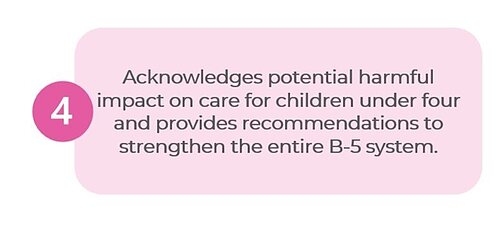
During the listening sessions, many home-based and community-based providers expressed that they did not want to lose their four-year-olds to another program. At the same time, parents and community members said they wanted to retain the quality that has been ensured by the Great Start Readiness Program (GSRP) guidelines. Home-based and community-based providers have not been able to meet some of its more rigorous high standards.
“In the Roadmap, those high standards are no longer the gate that determines whether or not you get funding,” says Capizzano. “They’re the destination that we want all providers to ultimately meet. With this action plan, what it allows is providers to be a part and receive funding for PreK for All as long as they’re committed to improve in quality, meeting the standards over time.”
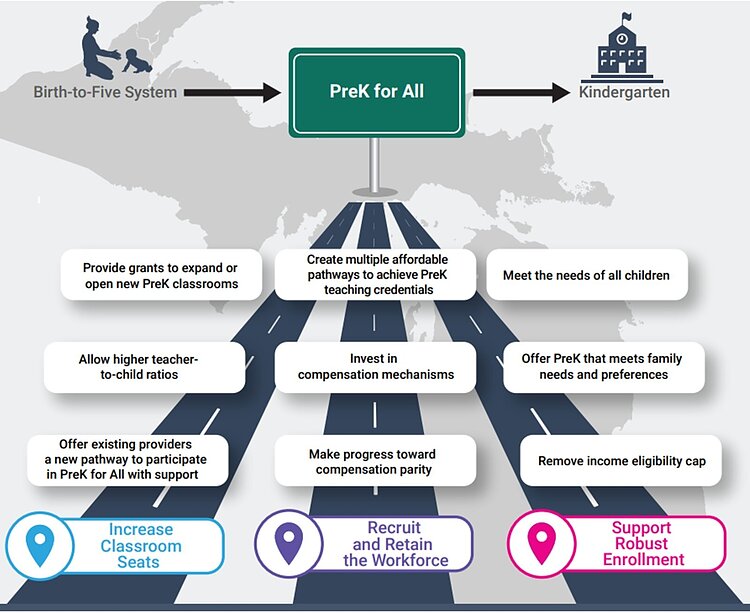
“Having child care is a huge benefit because it allows me to look for employment and take care of different responsibilities.”
Shamirror Moncrief, parent
A concern raised by many is that pre-K is only one component of the early learning system, which serves children from birth to age 8.
“The Roadmap acknowledges very clearly that pre-K is one part of a continuum of care and education that starts at birth and goes through kindergarten and beyond,” says Eileen Storer Smith, program officer for the W.K. Kellogg Foundation, one of four organizations that provided funding support for developing the PreK For All Roadmap.
Storer Smith appreciates that as the process to develop the Roadmap unfolded, partners analyzed funding sources to support early childhood education, such as the federally-funded Head Start program and childcare subsidies, and thought about how to leverage those dollars in a way that ensures that collaborations are created that reduce competition for resources and duplications of efforts. The result will be that Michigan can build toward a more holistic, comprehensive, and coordinated system.
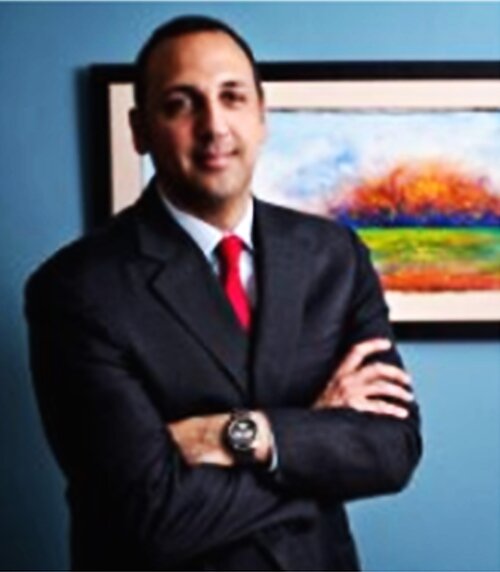
Capizzano notes that the recommendations communicate what they would like to do, but the implementation is ultimately up to the state legislature and Governor Whitmer. In her 2024 budget proposal, Whitmer made clear that education was a top priority. That budget includes $159.5 million for the continued expansion of free pre-K, which she notes could save families $10,000 a year. The $159 million would provide $63.5 million to serve an additional 6,800 children starting in the fall of 2024; $42.8 million to expand the full day per child allocations to $10,342; $35 million to open new classrooms in underserved areas; and $18 million to continue higher payments for student transportation.
“This is kind of the first step in the process of implementation. We were trying to chunk out what the biggest things we needed to focus on first, and it was all about capacity. It was getting people enrolled and also making sure the program fits within the system,” Capizzano says. “The next steps will look at the other pieces such as coordinated enrollment, implementing the home-based pilot, and how best to support five-day-a-week programming.”
Early Education Matters is a series about how Michigan parents, childcare providers, and early childhood educators are working together to implement Pre-K for All. It is made possible with funding from the W.K. Kellogg Foundation.

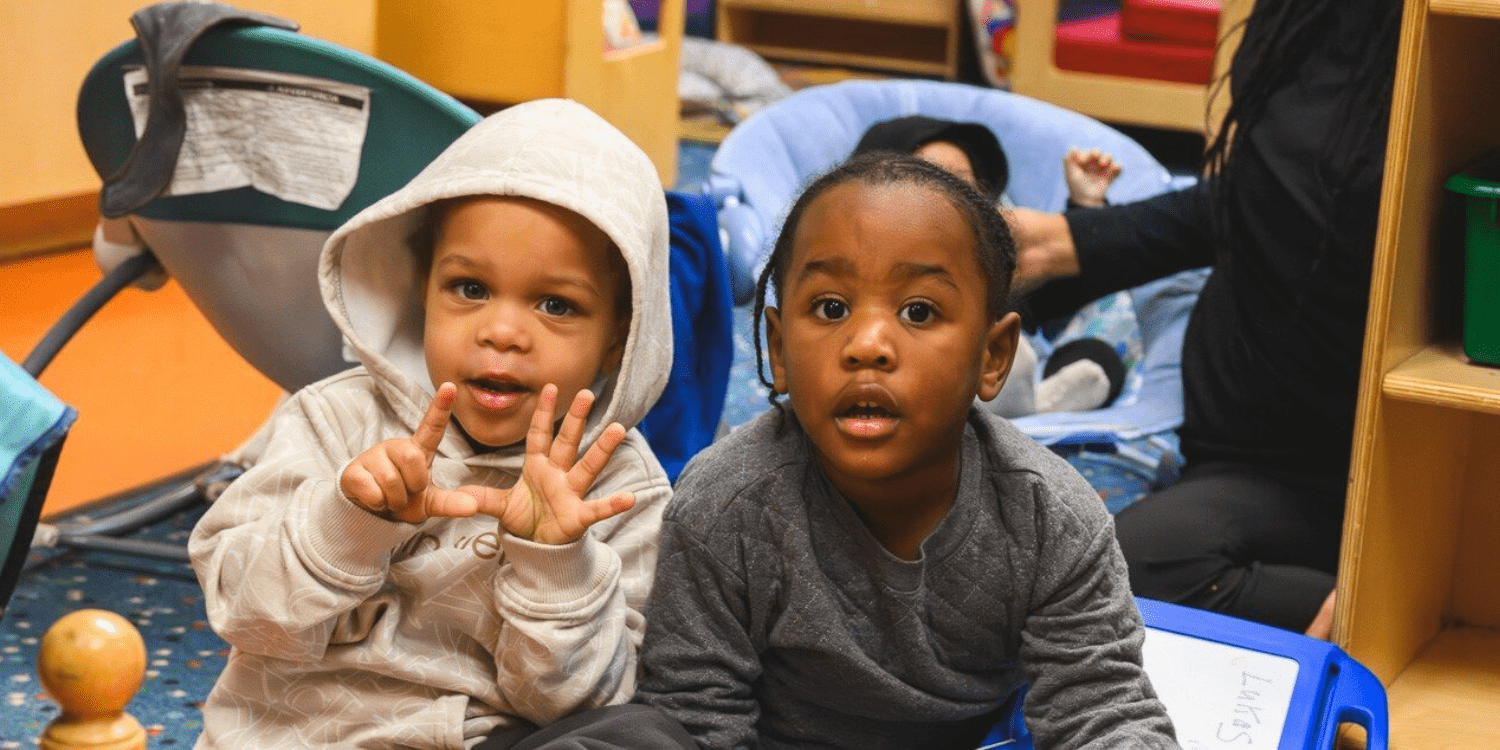


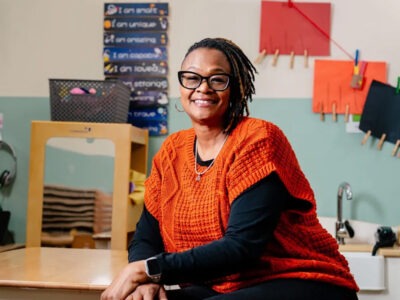

Comments